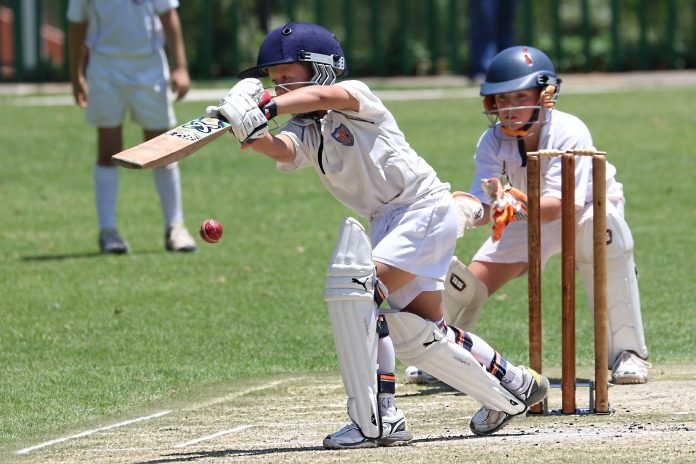Cricket is a sport played by millions and watched by billions on television. Here with 20 interesting facts about cricket, tell us more about the history of the game, players, rules, and much more.
Facts About Cricket
- Cricket is a popular and exciting sport – so popular that it is considered the second most loved sport in the world. It is loved by over 2.5 billion fans in 180 countries. The sport is most popular in the UK, Australia, and the Asian subcontinent (especially India and Pakistan).
- Cricket was originally a game for children in England in the 16th century, especially in the southeastern counties. When the British expanded abroad, they took the game with them.
- The man considered to be the father of cricket is William Gilbert (W.G.) Grace. He played amateur cricket in England and is credited with helping to make the sport a modern obsession.
- England’s first Test cricket captains were James Lillywhite and David Gregory. Of the two, Lillywhite was the first player. He died in 1929, becoming the last player in the First Test match to die.
- Cricket is played in many forms, but the three main forms are:
Twenty20, One-Day Internationals (ODI), and test matches. Of these, test match is the traditional form, used since 1877. This is also considered the highest level.
- Although there are 31 countries that play international cricket, only 12 are eligible for Test status. The first countries to get this status were the UK and Australia (1877) and the latest was Afghanistan (2018).
- The biggest event in cricket is the World Cup, organized by the International Cricket Council (ICC). It was founded in 1909 as the Imperial Cricket Conference. The three founding countries are the UK, South Africa, and Australia.
- The oldest world cricket championship is the ICC Women’s Cricket World Cup. The first tournament organized by England took place in 1973. The British team was the champion of the first tournament.
- The first world cricket championship was held in 1975, in which men’s teams participated. The title was won by the West Indies, with Australia coming in second.
- The country with the most losses in international cricket is England, having played 691 matches without a win. They also played the most matches (1,885).
- The cricket ground is 20.12 meters (22 yards) long and 3.05 meters (3.33 yards) wide. The length of 22 meters is considered a string, which was used as a standard of land measurement in the 18th century. The warp thread is 1/10 of a unit of measurement called furlong, which is the average length of a piece of land that a group of workers can plow in one day.
- The surface of the cricket field can be covered with very short grass and must be flat. In some locations, the playing surface may consist of man-made material or even dry ground. The pitch should never be changed or repaired during a match as long as the wear and tear are considered normal. Only in exceptional cases will the ground be repaired.
- The condition of the cricket ground can change a team’s strategy. If the ground is dry, the best bowl will be spinning, meaning that the best pitchers on the team should be selected for the job as their skills will give their team a significant advantage.
- The cricket facts are that the ball weighs is 163 grams. Its core is made of cork wrapped with many layers of yarn. The outer shell is made of leather, which is then covered with a layer of lacquer.
- The small gates that cricket balls have to pass through are called “gates”. The term is used because of the stub’s similarity to a gate, which is a small gate or pedestrian gate.
- Early cricket rackets used only two stumps with a stake attached. This design was changed in 1775 after an English cricketer, Lumpy Stevens, was able to deliver three balls in a row between stumps. This is why modern counters have three stubs instead of just two.
- The crossbars, the horizontal pins on the base of the tree, are not attached to the top surface. Instead, they sit in shallow grooves at the free end of the stump. Bonding is essential in determining whether the wicket has been established or broken. This, in turn, will help determine the batter’s state, whether they’ve been exhausted, knocked out, or confused.
- In the event of a windy match, the umpire may decide to withdraw the deposit to avoid tearing. They can also be replaced with heavier rails to keep them securely on the stump. Although the guarantors may not be present, they are said to be at the tree’s side at all times. The umpires will then decide if the racket frame is broken.
- The term “wicket” is used many times in cricket. To get a racket is to eliminate a pitcher. Losing one racquet is disqualified. A pitcher returning a pitcher is supposed to take a racket. The cricket field is sometimes referred to as the playing field, although this is considered incorrect under cricket rules. Anyway, it’s still used, especially by commenters.
- Women playing cricket facts are since the 1700s. Villages in Surrey, Sussex, and Hampshire organize their own local and inter-village tournaments. Prizes for the games include lace gloves and beer kegs.









